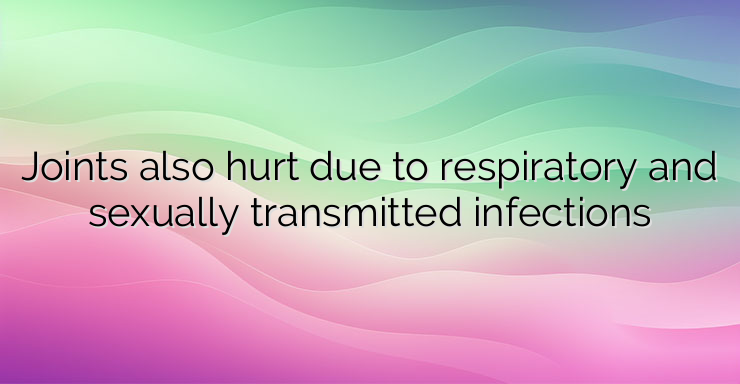Joint pain is a common complaint after illness, including the flu. It usually appears about 3 weeks after infection. It is observed in sexually transmitted infections, especially with chlamydia, infections of the kidneys and urinary tract, of the digestive system, for example, salmonellosis, dysentery and others, respiratory infections, including only of the nasopharynx. The condition is due to a reaction-response by the body against the infection. It is defined as reactive arthritis. Reactive arthritis is an aseptic inflammation of the joints as a result of disease. In this type of inflammation, no infectious agent is detected in the affected tissues, joints, and there is no presence of pus in them. The reaction is autoimmune, i.e. agents of the immune system are directed at healthy cells from the tissues of the body as a result of misrecognition – of the substances contained in them – as foreign to the body. In addition to the inflammation of the joints, reactive arthritis can be recognized by the presence of conjunctivitis and urethritis, which appear earlier than the chief complaint. Urethritis can be acute or chronic. In men, it can cause complications and develop prostatitis. In some cases, there is damage to the skin and mucous membrane of internal organs such as kidneys, liver, heart muscle, and the central nervous system. Joint pain appears in parallel with an increase in body temperature. Discomfort in the joints of the lower limbs is more often described, and the complaints do not necessarily affect them symmetrically. Swelling, for example, is observed in the knee of one leg and the ankle of the other leg. Swelling of the feet can also be due to inflammation of the small joints there. In reactive arthritis, there are complaints of pain in the joints of the hands or lower back, although less often. If the disease is left untreated, it causes stiffness and atrophy of the muscles to the adjacent joints. Enlargement of the local lymph nodes is observed. The disease can also be recognized by the formation of specific spots on the skin of the palms and feet – red, with the center covered with horny skin. Painless erosions are found on the mucous membranes. The onset of reactive arthritis lasts between 3-6 months. However, relapses are possible after recovery. In cases of chronic form, it is possible to initiate polyarthritis. It is more common in adults over 40. Determining the disease should not be a problem. The three main symptoms: conjunctivitis, urethritis and joint pain are leading. Finding the changes in the joints through an X-ray confirms the doctor’s assumption. The specialist can also order an analysis of fluid from a joint, in which signs of inflammation are reported. The main infectious cause of the disease, to which the therapy is mainly directed, is also sought. Anti-inflammatory drugs are prescribed for joint complaints. Physiotherapy procedures can also be prescribed.Timely treatment of infectious diseases is the best way to prevent the development of reactive arthritis, including in the age before 40.


Leave a Reply